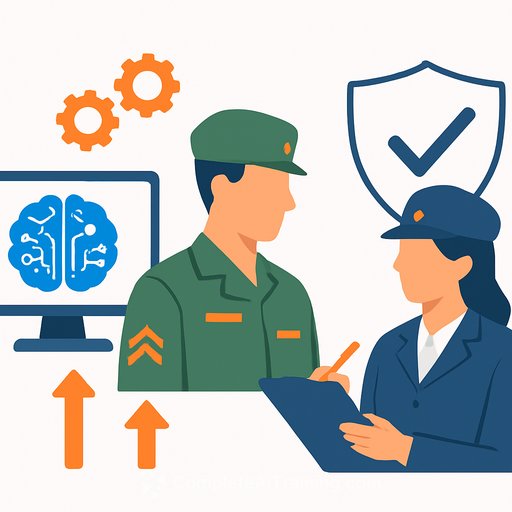How the U.S. Army Uses AI to Streamline Promotions - And What HR Can Learn
The Army is using AI-driven checks to screen enlisted promotion files for eligibility and basic scores. The goal: reduce board workload and focus human judgment where it matters.
Leaders emphasize that AI will not replace people. "Humans will be part of each step to override whatever the computer's decision may have been," said Col. Tom Malejko, chief talent analytics officer at Army Human Resources Command.
What the Army Is Actually Doing
- Algorithms scan records and score evaluation reports to confirm prerequisites like required schooling and specific job history.
- Humans retain control. Reviewers can override machine decisions and handle edge cases that need judgment.
- Bias controls are in place. Systems avoid using the racial or ethnic nature of a name and ignore branch and rank to reduce skew.
- Pilot first. The Army is starting with non-commissioned officer boards, then applying lessons to officer boards once Congress grants additional authorities.
- Continuous tuning. The Army has used algorithms for four years to identify invite lists for command boards. Early issues included excluding some military intelligence officers due to wording in evaluations; humans intervened and added those missed.
Why HR Should Care
Screening at scale is hard. Thousands of records create noise and drain time from your best decision-makers.
Automated checks can remove clear non-eligibles and surface the most competitive profiles faster. But you need safeguards to prevent false negatives and bias.
Practical Takeaways for HR Teams
- Codify eligibility rules: Convert policy into precise, testable criteria (education, tenure, performance thresholds, required roles).
- Human-in-the-loop by design: Build override workflows with reason codes. Track how often humans disagree with AI.
- Bias mitigation: Exclude protected attributes and known proxies (e.g., names). Test for disparate impact across groups.
- Quality checks: Run random samples of rejects to find false negatives. Escalate edge cases to senior reviewers.
- Version control and audit trails: Log data sources, model versions, thresholds, overrides, and outcomes for each decision.
- Clear candidate communication: Provide eligibility criteria and a simple appeals path to maintain trust.
- Drift monitoring: Continuously evaluate model performance as job language and evaluation styles change.
- Pilot → iterate → scale: Start with a narrow use case (eligibility screening), measure impact, and expand responsibly.
- Legal and policy alignment: Confirm your authority and compliance obligations before expanding use (as the Army plans for officer boards).
- Training: Upskill HR staff on AI literacy, data ethics, and review practices so oversight has teeth.
Key Quotes HR Will Recognize
- Maj. Gen. Hope Rampy: Boards review thousands of records, including many "not even competitive for promotion." Automated screening helps avoid wasted effort.
- Col. Tom Malejko: The system is built for speed and focus - computers handle discrete criteria, humans make judgment calls.
Governance Resources
For practical frameworks, see the U.S. Department of Defense AI Ethical Principles for guidance on responsible use here.
Skill Up Your HR Team
If you're building internal capability for AI-assisted screening and oversight, explore role-based learning paths here.
Bottom Line
Use AI to filter for clear eligibility and free your best reviewers to apply judgment. Keep humans accountable, measure errors, and tune the system as language and roles evolve.
That's how you get speed without sacrificing fairness.
Your membership also unlocks:






